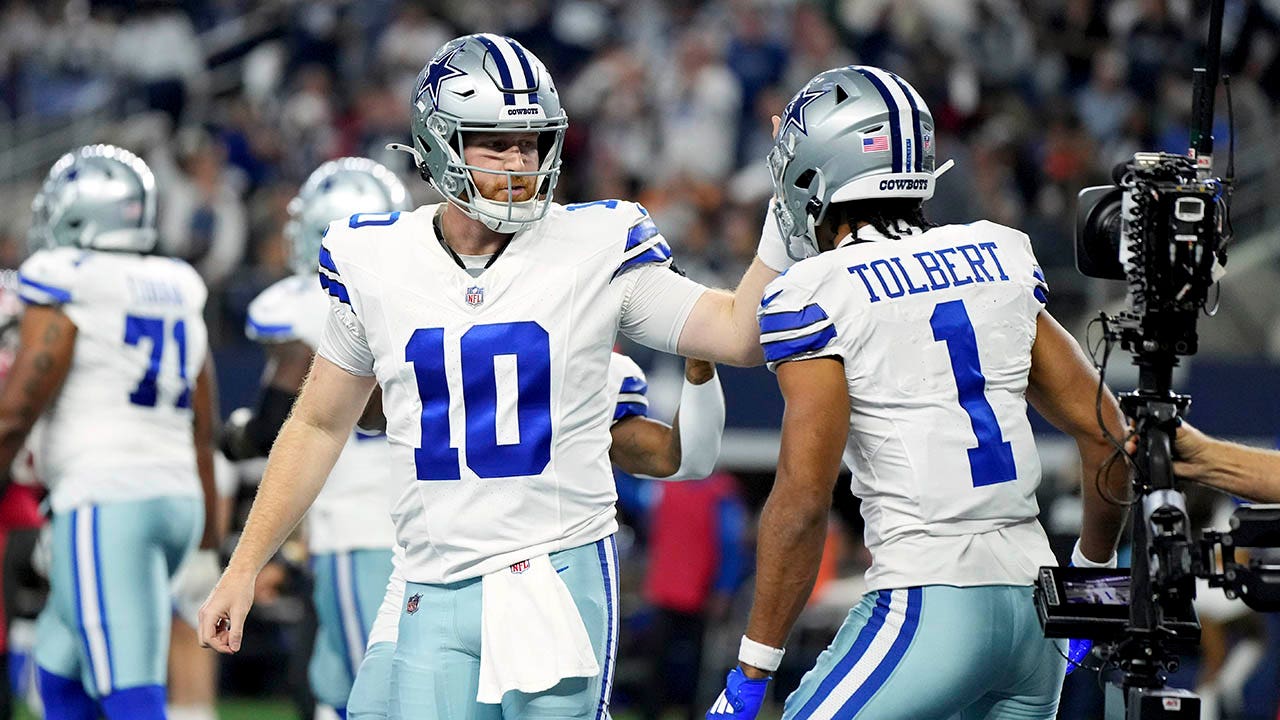Through talent, longevity and sheer productivity, it is possible that Karl Lagerfeld did more than any other designer to shape the look of the latter 20th century and the early 21st century. Across more than six decades, five different brands (three at the same time) and numerous collaborations, he flooded the zone from Paris to Dallas to Shanghai, dressing Hollywood, the haute and the high street.
But why tell when we can show? Here are some of the most notable looks from nearly every stage of an extraordinary career.
In 1954, Mr. Lagerfeld, a young German with no formal fashion training, won the coat category in the prestigious Woolmark Prize — a serendipitous event that led to a job as an assistant to the couturier Pierre Balmain, who was one of the judges. After only three years in that atelier, while still in his 20s, Mr. Lagerfeld was named artistic director of Jean Patou, a brand founded in 1914, whose founder was known for liberating the female form and for creating the perfume Joy.
There, Mr. Lagerfeld went on to create 10 couture collections over five years, laying the groundwork for his own facility in working with petites mains, and his ability to romp gleefully within the confines of an established aesthetic.
In 1966, Mr. Lagerfeld became designer of Chloé, one of the earliest ready-to-wear brands in Paris, working first with its founder, Gaby Aghion (who initially brought him on as a freelancer in 1964), before becoming sole designer in 1974. He would remain at the brand until 1983, returning again from 1992 to 1997.
Mr. Lagerfeld’s early work at Chloé, a name that became synonymous with a certain wafty femininity, may surprise many, toying as it did with prints and Surrealism. But it also reflected his ability to balance luxe eccentricity and wearability, with an eye to commerce (he never saw “sales” as a dirty word). By his second stint, he had fully embraced the bohemian, and set the tone for what was to come.
In 1965, the five Fendi sisters, who had inherited their family fur business from their parents, Adele and Edoardo, brought Mr. Lagerfeld on to design their ready-to-wear and fur collections.
They may have thought they were getting a clever designer, but what they actually got was a lifetime partnership. Silvia Venturini Fendi, the daughter of Anna Fendi, who grew up to design Fendi bags and men’s wear alongside Mr. Lagerfeld, recalled that even as a child, “when Karl came,” it was clear “something special was going on and I should pay attention.”
Mr. Lagerfeld created the “FF” logo, which stood for the concept of “fun fur” (as well as Fendi), and then started shaving, dyeing, sculpting and otherwise transforming the material, as well as introducing such pelts as mole, rabbit and squirrel to high fashion.
His work on the runway was equally experimental, with a wide array of references, including Fendi’s Roman roots and futurism. When LVMH bought the brand in 1999, Mr. Lagerfeld went with it, eventually pioneering a “haute fourrure” line (who had even heard of that before?) to go with the ready-to-wear, remaining defiantly pro-fur even as the public mood shifted and other brands turned against the idea of wearing animal skins.
In 1982, Mr. Lagerfeld got the job that would vault him into the fashion stratosphere: artistic director of Chanel, at that point a brand known primarily for perfume and bourgeois handbags. By adopting an approach he summed up in highly questionable terms (“Chanel is an institution, and you have to treat an institution like a whore — and then you get something out of her”), he revived a moribund brand, providing a template for the industry that is still in place today.
Splicing classic Chanel iconography — the camellia, pearls, the Maltese cross, bouclé suiting — with a heavy dose of irony and irreverence, he managed to make the brand a pop culture phenomenon, a symbol of classicism and a financial juggernaut. He helped create and popularize the traveling fashion show, bringing his runway to Salzburg, Edinburgh, Shanghai and Havana; dreamed up such viral runway sets as an iceberg (sculpted from parts of a Swedish glacier), a supermarket and a rocket ship (that actually lifted off); made mini-movies with Nicole Kidman and Kristen Stewart; and ultimately helped bring the brand annual sales topping $11 billion.
Perhaps tired of working within the style vernaculars established by others, in 1984, Mr. Lagerfeld founded his own namesake line. While it would never reach the size or fame of Chanel or Fendi, and though it went through numerous ownership changes, Lagerfeld the brand reflected his personal style more closely than any of his other brands. Imagine rock ’n’ roll tailoring with a Teutonic edge, filtered through a monochromatic lens, and you’ll get the idea.
In 2004, Mr. Lagerfeld became the first couture designer to collaborate with a mass-market brand when he signed on to do an H&M collection. First the fashion world was shocked, then it was intrigued, and after the line of Karl-alike black suits, portrait tees and L.B.D.s sold out in seconds, a whole new genre and approach was born.
Anna Grace Lee and Callie Holtermann contributed reporting.















































